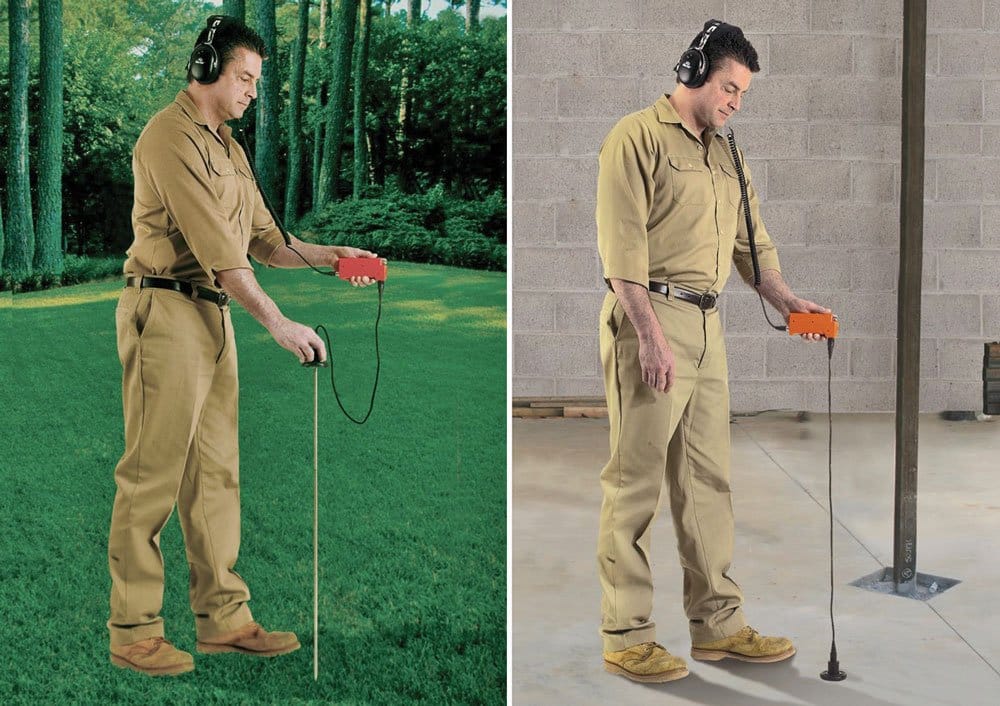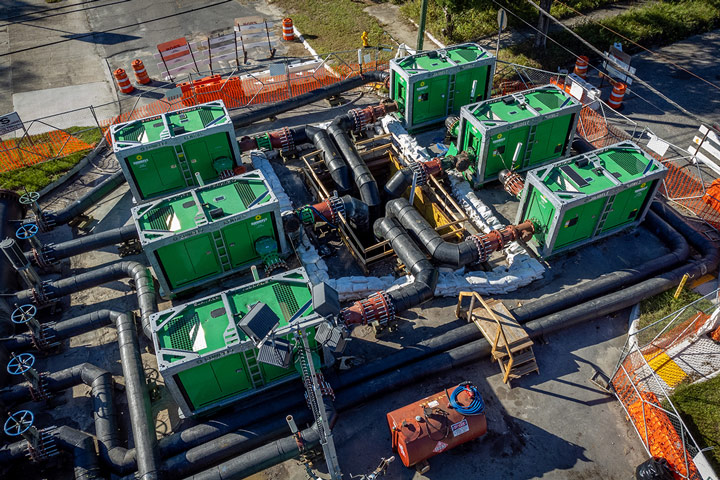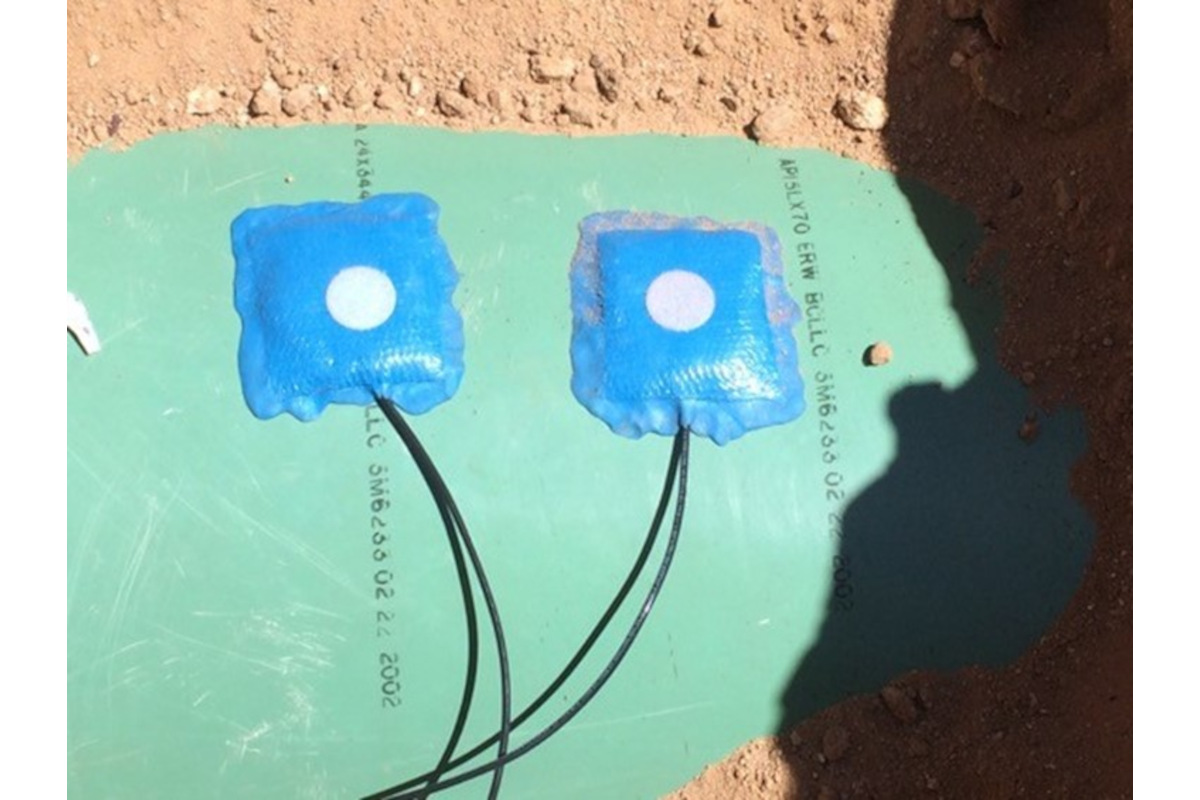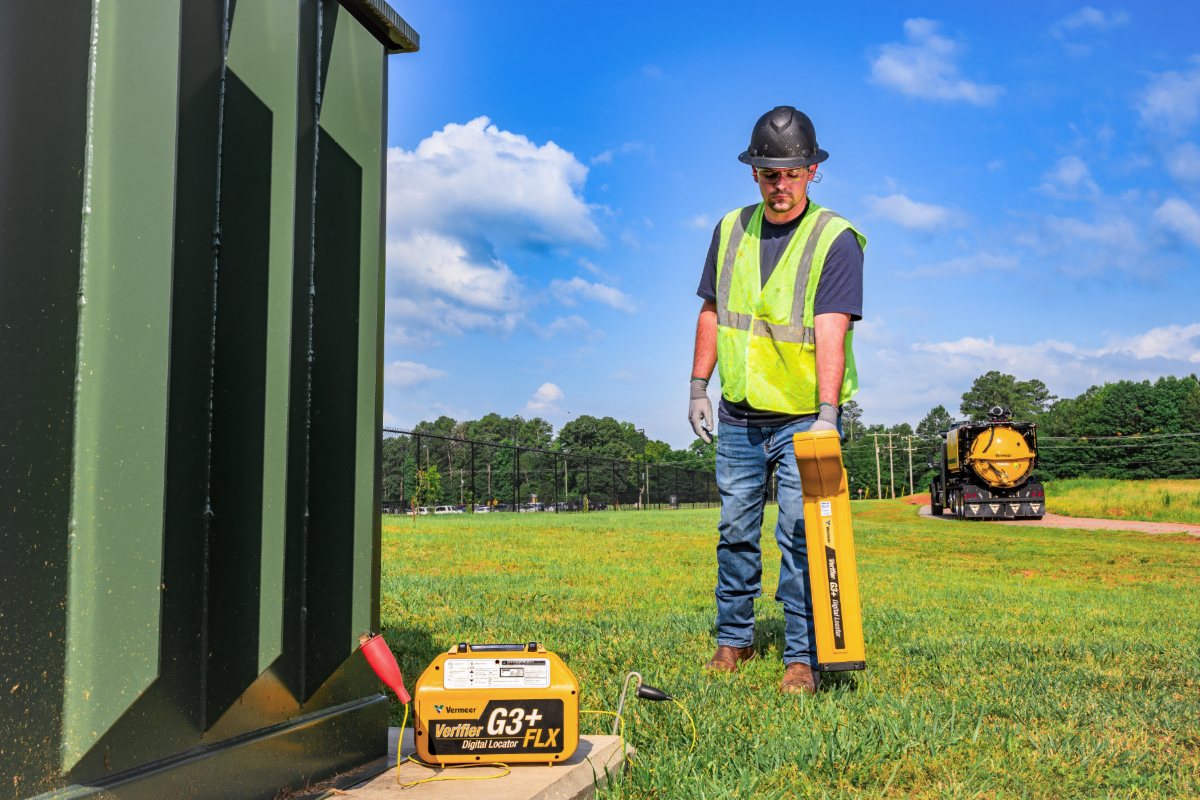
PRO Tips & Product Showcase – Utility Locators
Utility locators – though simple looking to someone with an untrained eye, are sophisticated pieces of electronic equipment. Whether you are working for a utility locating company or picking one up to find a leak or track a camera in a water or sewer pipe, it’s important to know what is available. We reached out to some of the major manufacturers in the space to see what is new on the market. We asked them to also include a PRO Tip on what to look for when purchasing equipment or how to keep it operating at its peak.
This is only a brief glimpse at this equipment. For more information, visit the manufacturer’s website.
RELATED: PRO Tips & Products Showcase – Combination Sewer Cleaners
General Pipe Cleaners

The Gen-Ear LE from General Pipe Cleaners is an easy-to-use, economical water leak locator with stronger sound amplification than other systems. Use the Gen-Ear LE to pinpoint water leaks in residential and commercial water lines. The compact amplifier fits easily in the palm of your hand. It provides noise-free amplification with built-in preset audio filters, so you don’t have guess what settings to use. And the high-performance headphones with noise cancellation features block-out interference from surrounding ambient noise. The advanced acoustic sensor listens for the gurgling or hammering of water escaping from a cracked pipe under any surface, like concrete, tile, grass or carpet. For especially hard to find leaks, the Sound Amplification Module adds air to the line, increasing the water pressure, thus amplifying the leak sounds making them easier to locate.
PRO TIP
Electronic water leak locators use audio filters to remove the ambient noise that interfere with leak location so you can hear the whoosh of the water leak. The leak location is usually found between the loudest and second loudest survey locations. Do not adjust the volume control. The volume must remain constant in order to make accurate comparisons. To make leaks louder and easier to find, inject air into the water line to amplify the sound. If you are new to leak location, learn the sound of a leak before you start your search. Touch the tip of the probe bar to the water line under a sink. Then turn on the valve just a little bit. This simulates the sound of a leak. The rest of leak location is a process of elimination. The art of locating water leaks takes patience, practice and the right tool.
For more information, visit drainbrain.com.
MyTana

MyTana’s Locate and Leak Detection Package helps pros save time finding leaks in utility lines. The new LD40 Leak Detector works like a stethoscope to detect hissing, trickle or seeping sounds, while filtering out background noises. It can detect through any surface and has an easy-to-understand, real-time visual response meter, enabling operators to listen and watch for leaks. Five frequency bands help users home in on hard-to-find leaks, so the LD40 is ideal for use on vertical line leaks, slab leaks, irrigation leaks and more. The package also includes MyTana’s RL8873 Locator and RT8872 Transmitter, which locate most buried utility lines — so you can find the leak faster.
For more information, visit mytana.com.
RELATED: Equipment Financing in Today’s World
Ridgid

The RIDGID SeekTech ST-305R Transmitter is a compact yet powerful multi-frequency transmitter. It can be used with any RIDGID SeekTech or NaviTrack receiver to find buried conductors such as pipes, cables and wires. With its battery shoe, the ST-305R can be powered by a Li-Ion 18 V rechargeable battery or six alkaline or NiMH C-cell batteries. It delivers up to five watts of power and transmits two frequencies simultaneously to allow optimal frequency selection. Audio feedback also confirms a good circuit before beginning a trace. Includes RIDGID Lifetime Warranty.
PRO TIP
To ensure an accurate locate, you must obtain a proper ground with your ST-305R Transmitter. With one lead attached to your targeted utility and the other lead attached to your ground rod, the ST-305R will give off an audible beeping sequence that ensures you have a proper ground to get an accurate locate.
For more information, visit ridgid.com.
Spartan Tool

The Spartan Tool locator meets the rigors of the job and allows you to locate in virtually any pipe material. Besides drain lines, the Spartan Tool locator enables you to map existing lines from other services to ensure your safety when digging. The on-screen arrows and aural tones guide the operator to the line. Lines can be located using an inductive clamp, beacon (sonde) or passive (utility) lines. Combine the line location with the depth estimator function and you know just how much you will have to dig. The user-friendly control panel means you will be using the locator quickly to add another service to your customer menu.
PRO TIP
In general, locators are simple pieces of equipment to operate. However, multi-function locators have several configurations and settings designed for specific job-site environments. The user should always read the operators manual thoroughly and practice with the device in a familiar, low traffic environment before using. The biggest hazard to operators is their surroundings and lack of attention to hazards. If working near high traffic areas, wear brightly colored and reflective clothing and incorporate the help of a spotter. It’s easy to become focused on the locator screen and distracted from your environment. Maintenance on your locator is simple: keep it clean and protect it from drops. When storing your locator, keep it in a protective case and remove the batteries. Improper storage and corrosion from ruptured batteries is the number one cause of failure for locators and transmitters.
For more information, visit spartantool.com.
RELATED: PRO Tech Tips – Utility Locators
Subsite Electronics

The Subsite Electronics UtiliGuard 2 is a multi-frequency utility locator. Available in Standard and Advanced models, UtiliGuard 2 takes all the proven performance-boosting features of the original UtiliGuard and adds several important new capabilities including an all-new user interface, integrated data capture, and GPS positioning. The UtiliGuard 2 user interface was designed with industry specialists and trainers to feature simplified graphics that are easier and faster to interpret. Operators will notice an obvious change in screen layout when directly over a utility locate, providing positive confirmation. The new combination of screen graphics delivers increased operator confidence, locate consistency and operational performance. UtiliGuard 2 automatically captures data without altering the operator’s normal workflow. This data can be used by operators to verify their performance and demonstrate quality and process compliance in the field. Supervisors can also use this data to track performance, compare it with benchmarks and enable actionable outcomes to be implemented. This reporting and auditing capability helps increase quality, reduce cable strikes and increase productivity across multiple crews.
PRO TIP
Electromagnetic locators are the primary locating tool used by utilities, contract locators and underground construction contractors. Electromagnetic locators are relatively easy to operate and when correctly used, are accurate. An electromagnetic system consists of a handheld receiver and small transmitter. The operator walks above where utilities are expected to be, and the receiver locates underground pipe and cable by detecting magnetic fields created by electrical current passing through the lines. Information is displayed on a window at the top of the receiver. For communications cable and metallic pipe, the small transmitter is connected to cable or pipe and sends current through the line to create a signal which is detected by the receiver. For plastic pipe with tracer wire, the wire is energized by the transmitter to provide a signal that the receiver can pick up. Electromagnetic equipment has advanced significantly in the past several years. For example, the Subsite UtiliGuard 2 utilizes GPS positioning and has an Ambient Interference Measurement (AIM) feature that scans the surrounding area for noise that could interfere with the locating signal and recommends the best frequencies to make the fastest, most accurate locate. The system provides both horizontal location and depth of the line being located.
For more information, visit subsite.com.
Vermeer

The Vermeer Verifier G3 utility locator combines trusted precision with a user-friendly interface. Features include a combination peak and null screen, semiautomatic and manual gain adjustment, automatic depth and current measurement index and compass icon. Users new to the locating profession will appreciate the streamlined design and simple interface; advanced operators have the option to capitalize on some of the industry’s most advanced locating technology — all in one device.
PRO TIP
Contractors should approach buying a utility locator the same way they do any piece of equipment — buy quality. They should invest in a locator that is accurate even when working in a crowded area with a lot of interference. It should also be able to hold up under harsh jobsite conditions, including dirt, rain and heavy usage. And, it should be purchased from a dealer that can provide responsive service support if there is an issue with the unit.
For more information, visit vermeermvs.com.
Vivax-Metrotech

Anyone who has located sondes or push cameras knows what a nerve-racking task this can be. Problems encountered can be ghost signals, deep depths and rebar in concrete. Fortunately, the new vLoc3-Cam Sonde locator brings advanced filtering and omni-directional antenna technology that will make sonde locating fast, easy and accurate. The bright full color graphical display, directs the user to the sonde with directional arrows. When on top of the sonde confirmation is given with a large sonde icon and depth reading. The “Pushrod Trace” mode shows a second display for tracing the path of the pushrod deployed in the pipe or tracing utilities with an optional portable transmitter. Passive locate modes of Power and Radio will detect the presence of live power lines, CATV, telephone and metallic pipes which radiate 60 Hz from nearby or overhead power lines.
For more information, visit vivax-metrotech.com




